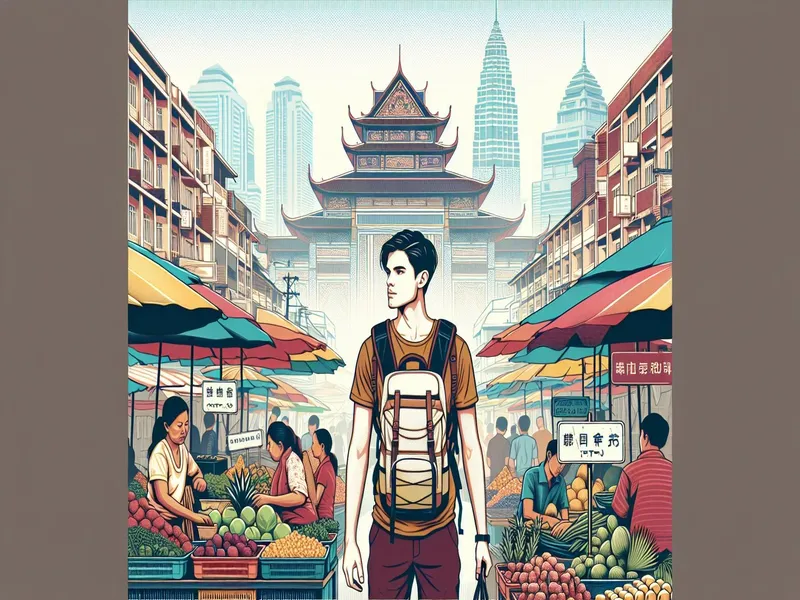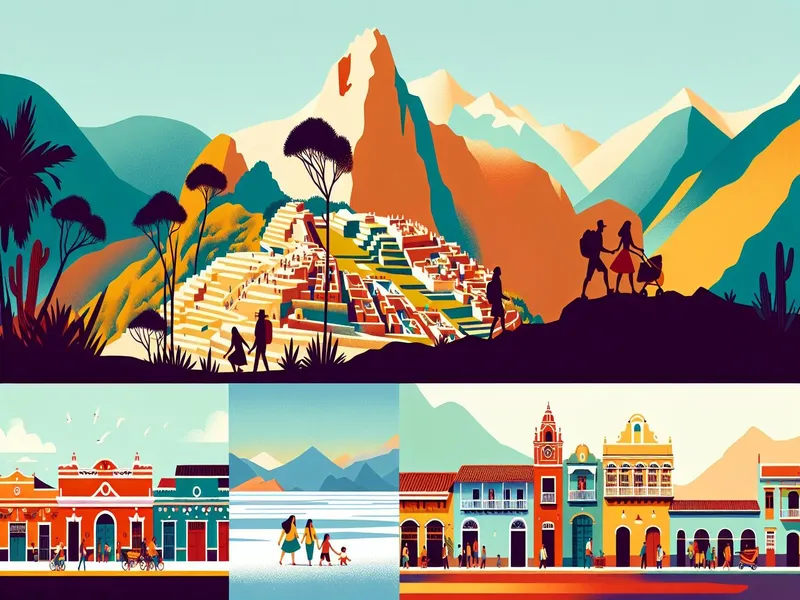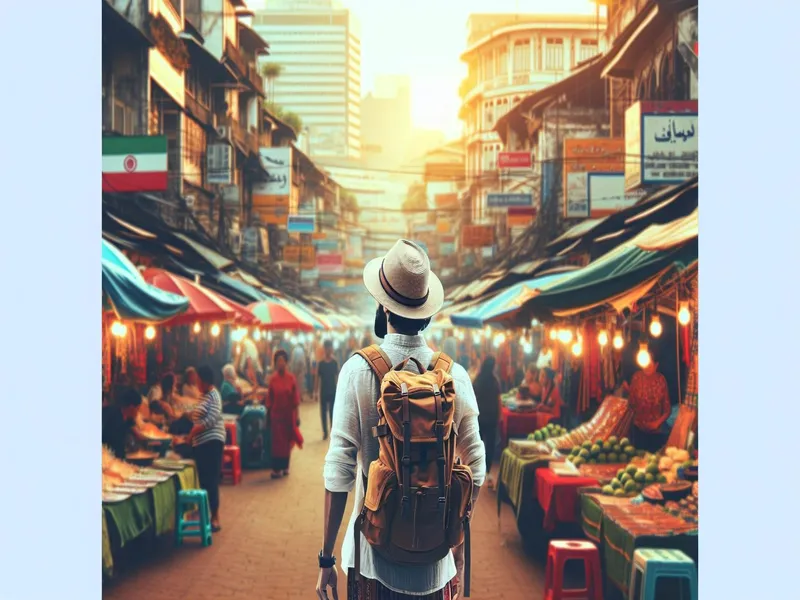
Many travelers crave the freedom and self-discovery that comes with exploring this diverse continent on their own terms. Whether you’re drawn to the bustling streets of Tokyo or the tranquil beaches of Bali, solo travel in Asia offers an unparalleled experience.
But let’s face it: traveling alone can be daunting. The fear of getting lost, language barriers, and safety concerns often hold people back from taking the plunge. Ignoring these worries means missing out on incredible opportunities for personal growth and unforgettable experiences.
I’ve been there myself—exploring foreign cities, making new friends along the way, and discovering hidden gems only locals know about. With years of solo travel under my belt, I know what it takes to make your journey both safe and enriching.
Solo travel isn’t one-size-fits-all; it’s essential to tailor your plans to your interests and comfort level. From budget backpackers to luxury seekers, there’s something for everyone in Asia’s vast landscapes. So why wait? Let’s jump into how you can make your solo trip truly memorable.
For more ideas on things to do during your travels, check out our travel activities guide.
Benefits Of Solo Travel In Asia
Traveling solo in Asia offers numerous benefits that can truly change your perspective on life. Imagine wandering through the bustling streets of Bangkok or finding peace in a remote temple in Kyoto—all on your own terms.
Personal Growth
Solo travel forces you to step out of your comfort zone. I remember my first trip to Vietnam, where I had to navigate local buses without speaking the language. It was daunting but incredibly rewarding when I finally reached my destination. You’ll gain confidence and become more self-reliant as you tackle challenges independently.
Flexibility And Freedom
When you’re traveling alone, you make all the decisions. Want to spend an extra day exploring Angkor Wat? Go for it! Unlike group trips, there’s no need to compromise with others. This freedom allows you to create a personalized itinerary based on what interests you most.
Bullet Point:
- No waiting for others
- Change plans spontaneously
- Eat wherever and whenever
Cultural Immersion
Being solo often makes you more approachable to locals, which enhances cultural experiences. On a solo trip to Japan, I found myself invited into a tea ceremony by a kind stranger—something that might not happen in a group setting. These unique interactions give deeper insights into local traditions and lifestyles.
Cost Efficiency
Surprisingly, solo travel can be budget-friendly if done right. Without needing expensive accommodations that suit everyone’s taste (like high-end hotels), you can opt for cheaper alternatives like hostels or guesthouses. Plus, you’ll save money eating at local street food stalls rather than pricier restaurants catering to tourists.
Cost Comparison Table:
| Expense | Group Travel | Solo Travel |
|---|---|---|
| Accommodation | $100/night (avg.) | $20/night (hostel) |
| Meals | $30/day | $10/day (street food) |
Self-Paced Exploration
You set your own pace when traveling alone. If you’re tired from exploring Tokyo’s vibrant neighborhoods all day, there’s no pressure to keep going just because someone else wants to shop more. It’s liberating knowing each day’s activities are entirely up to you.
Imagine waking up late after a long night out in Seoul without worrying about holding anyone else back—pure bliss!
Enhanced Mindfulness
Solo travel often leads to greater mindfulness as you’re fully present in each moment without distractions from companions. Whether it’s meditating at Borobudur Temple or hiking through Bali’s rice terraces, these experiences become more profound when experienced alone.
So next time you’re hesitant about booking that ticket to Asia by yourself—don’t be! Embrace the adventure and discover how transformative it can be.
Popular Destinations For Solo Travelers

Asia’s got a treasure trove of destinations perfect for solo travel. Each country offers unique experiences that cater to different interests and comfort levels.
Thailand
Thailand is a classic choice for solo travelers. It’s affordable, friendly, and packed with things to do. Bangkok’s bustling streets are an adventure on their own—think street food, night markets, and temples like Wat Arun. Head north to Chiang Mai if you’re into nature and culture; you can explore the Elephant Nature Park or take a Thai cooking class. Down south, the islands like Koh Samui offer stunning beaches and vibrant nightlife. Plus, meeting fellow travelers is easy here thanks to the thriving backpacker scene.
Japan
Japan might seem daunting due to its language barrier, but it’s incredibly safe and well-organized for solo travel. Tokyo’s neon lights and quirky neighborhoods make it feel like you’re in a futuristic movie set—don’t miss Akihabara for electronics and anime culture! Kyoto offers serene temples like Fushimi Inari Shrine with its famous torii gates. Public transport is punctual and efficient, making it easy to get around even if you don’t speak Japanese. And let’s not forget the food: sushi bars where dishes glide by on conveyor belts are both fun and delicious.
Vietnam
Vietnam combines rich history with stunning landscapes. Hanoi’s Old Quarter brims with chaotic charm; street vendors sell everything from pho (noodle soup) to bánh mì (sandwiches). Take a cruise through Halong Bay’s limestone karsts for some jaw-dropping scenery—you’ll feel like you’re in an epic fantasy novel! Ho Chi Minh City blends modern skyscrapers with historical sites like the War Remnants Museum. The people are warm and helpful which makes exploring easier even if you hit a language snag.
Indonesia
Indonesia isn’t just Bali—though Bali alone has enough variety! Ubud attracts those seeking spiritual growth or just some peace among rice terraces and yoga retreats. If surfing’s your thing, head over to Kuta Beach for some waves; it’s also great for nightlife if that’s what you’re after. Jakarta offers urban thrills while Yogyakarta gives you access to Borobudur Temple—a UNESCO World Heritage site that’s nothing short of awe-inspiring at sunrise.
Essential Tips For First-Time Solo Travelers

Solo travel in Asia is an adventure like no other. It’s both thrilling and a bit nerve-wracking, especially if it’s your first time. But don’t worry, I’ve got some essential tips to help you navigate this exciting journey.
Safety Precautions
Safety’s always the top priority when traveling solo.
First, research the safety of your destination. Websites like the U.S. State Department provide up-to-date travel advisories.
Second, keep copies of important documents (passport, visa) separate from originals. If you lose one, you’ll have backups.
Third, stay aware of your surroundings at all times. Avoid poorly lit areas at night and trust your instincts—if something feels off, it probably is.
Finally, consider registering with your embassy; they can assist you in emergencies.
Packing Essentials
Packing smart makes a world of difference on solo trips.
- Travel light: A carry-on bag simplifies transfers and reduces stress.
- Portable charger: Keeping your phone charged ensures you’re always reachable.
- Medications and first-aid kit: Better safe than sorry.
- Comfortable shoes: Expect lots of walking; comfy footwear is vital.
- Reusable water bottle: Stay hydrated without constantly buying bottled water.
Remember to pack versatile clothing suitable for various weather conditions; layering helps adapt to different climates easily.
Cultural Insights And Etiquette
Exploring Asia solo can be an incredible adventure. But, it’s key to respect local customs and understand cultural nuances to ensure a seamless process.
Respecting Local Customs
When traveling in Asia, respecting local customs is crucial. In Thailand, for instance, always remove your shoes before entering someone’s home or temples. It’s seen as a sign of respect. Bow slightly when greeting someone in Japan; it shows politeness and humility.
In many Asian countries, using the right hand for eating or handing something to someone is important due to cultural beliefs about cleanliness. Public displays of affection might be frowned upon in places like India and Malaysia, so keep things low-key if you’re with a partner.
To stay respectful:
- Dress modestly: Especially when visiting religious sites.
- Follow local dining etiquette: For example, never stick chopsticks upright in rice—it symbolizes death in some cultures.
- Learn basic greetings: A simple “hello” or “thank you” can go a long way.
Language Tips
Exploring language barriers can seem daunting but isn’t impossible. Knowing a few key phrases can make your trip smoother and more enjoyable. In Vietnam, saying “Xin chào” (pronounced sin chow) means “hello.” In China, “Xièxiè” (pronounced shyeh-shyeh) means “thank you.”
Carry a phrasebook or use translation apps like Google Translate for quick help. These tools are lifesavers when you’re trying to order food or ask for directions.
Here are some tips:
- Learn numbers: Useful for shopping or bargaining at markets.
- Use polite words: Always good to know how to say “please” and “excuse me.”
- Visual aids: Pointing at pictures on menus works wonders if language fails.
Don’t stress about not being fluent—locals often appreciate the effort you put into speaking their language.
Budgeting For Your Trip
Traveling solo in Asia can be an incredible adventure, but it’s essential to budget wisely so you can make the most of your experience without very costly. Let’s jump into some practical tips for managing your money on the road.
Accommodation
When it comes to finding a place to stay, Asia offers a wide range of options that cater to every budget. I’ve stayed in everything from luxury hotels to cozy hostels and even quirky capsule hotels. Here are some tips:
- Hostels: These are great if you’re looking to save money and meet other travelers. Websites like Hostelworld offer plenty of choices.
- Guesthouses: Often family-run, guesthouses provide a more personal touch. They’re affordable and give you a taste of local life.
- Capsule Hotels: Popular in Japan, these tiny pods are perfect for short stays and usually come with all the essentials.
Booking ahead can sometimes get you discounts, but don’t be afraid to walk in and negotiate rates either—especially during off-peak seasons.
Food And Dining
Food is one area where you can really stretch your dollar while traveling solo in Asia. Street food is not only delicious but also incredibly cheap. I remember having a mouth-watering bowl of pho in Vietnam for just $2! Here’s how you can eat well without spending much:
- Street Food: It’s safe (most of the time) and tasty. Look for stalls with long lines; locals know what’s good.
- Local Markets: Fresh produce markets often have stalls selling prepared foods at low prices.
- Set Menus: Many restaurants offer set meals that include multiple courses for less than ordering à la carte.
Don’t forget apps like Yelp or Zomato; they’re handy for finding highly-rated yet affordable eateries nearby.
Final Thoughts
Solo travel in Asia offers an incredible opportunity for freedom and self-discovery. Overcoming initial fears can lead to profound personal growth and unforgettable experiences. Respecting local customs and understanding cultural nuances enriches the journey.
By planning well and embracing flexibility you’ll find that solo travel can be both fulfilling and budget-friendly. Remember: each destination has something unique to offer catering to various interests and comfort levels.
So pack light stay safe and get ready to immerse yourself in the vibrant cultures of Asia. Happy travels!